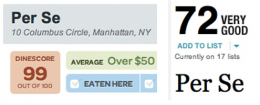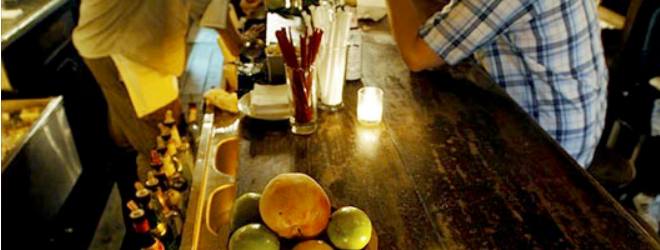
 There are a lot of restaurant ranking and recommendation sites out there. But none combine the high-brow skill sets so well as Dinevore, a New York City based startup that offers a unique platform for making and sharing mini restaurant guides.
There are a lot of restaurant ranking and recommendation sites out there. But none combine the high-brow skill sets so well as Dinevore, a New York City based startup that offers a unique platform for making and sharing mini restaurant guides.
Today, Dinevore unveiled its latest site design and was kind enough to whip up our NYC local TNW readers a very special Valentine’s Day restaurant guide. Their new header is “The Best Way to Pick a Place to Eat: Discover, organize, and share the best restaurant advice on the web.”
The new design places greater emphasis on following users as opposed to just lists and geolocation. Dinevore now locates users automatically and displays results based on where they are. It’s also expanded beyond simple search-by-neighborhood to enable users to search for results around an address, neighborhood, city or state. Dinevore’s new partners include New York Magazine, Village Voice, NYTimes, Eater and the James Beard Foundation.
Launched in late August 2010, founder Jeremy Fisher and one other full time employee run the company. Fisher, an obvious foodie, was tired of amassing Google Maps and Excel spreadsheets to organize restaurant information for his friends. “You could look at sites that rely on user generated reviews but there just wasn’t an easy way to share recommendations between friends,” he says.
 Fisher believes review sites like Yelp have a high cognitive burden both to create lengthy reviews and to consume them. Instead, Dinevore uses a metaranking system in which it gives each restaurant an aggregated “dinescore,” akin to Rotten Tomatoes‘ ratings. The scores are generated by user recommendations combined with meta-scored reviews from professional critics. A food critic’s influence on the rankings changes based on whether users agree or disagree with the critic’s recommendation, which will soon be called TastyRecs (sounds like T-Rex).
Fisher believes review sites like Yelp have a high cognitive burden both to create lengthy reviews and to consume them. Instead, Dinevore uses a metaranking system in which it gives each restaurant an aggregated “dinescore,” akin to Rotten Tomatoes‘ ratings. The scores are generated by user recommendations combined with meta-scored reviews from professional critics. A food critic’s influence on the rankings changes based on whether users agree or disagree with the critic’s recommendation, which will soon be called TastyRecs (sounds like T-Rex).
Overall Dinevore’s guides are more relevant and refined than other competitive
sites and the 700 available lists can be filtered by location, price and cuisine. Users can create lists of their favorite restaurants, then curate suggestions by “following” users whose taste they trust. The site also has a nifty Foursquare feature that pulls in every restaurant or bar you’ve ever checked into to populate your default list. It auto-updates whenever you check-in and will soon pull in your to-dos.
Users can add restaurants to their “want to eat here” to-do lists or customize different lists such as the Valentine’s Day list or Fisher’s new BBQ Spots in Austin List to celebrate the fact that Hashable will be taking him to SXSWi. Users don’t even have to leave the site to make a reservation—it links straight to OpenTable.
The site has a few thousand users and Fisher focuses on getting influencers like professional food critics and food bloggers into the space. Active influencers include the Eater Food Blog and the Restaurant Editor of Bon Appetit and The New York Times. Professional reviews are trapped in a silo on a specific publisher’s site; one part of Dinevore is aggregating this content. “We’re making it easy for everyone to be a foodie,” says Fisher.

So what’s in a name? Fisher, an admitted dinosaur fan as a kid, thought of the name Dinevore as a portmanteau of “Dine Out” and “Omnivore, Carnivore and Herbivore.”
The company is currently bootstrapped and is looking to finish raising a funding round in the somewhat near future. Fisher’s favorite place to eat in New York City? Carroll Gardens’ Court Street Grocers for their sandwiches.
Get the TNW newsletter
Get the most important tech news in your inbox each week.





